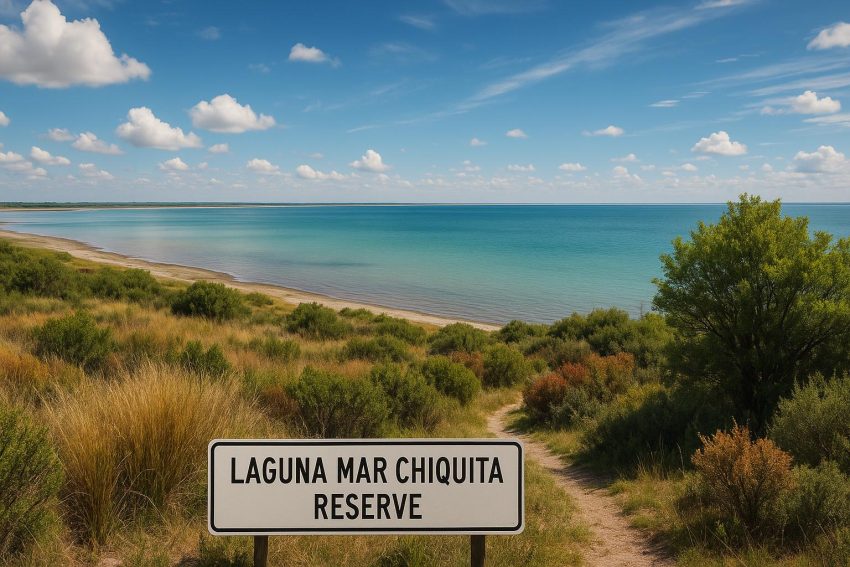Overview of Laguna Mar Chiquita Reserve
Laguna Mar Chiquita Reserve, located in the province of Córdoba, Argentina, is recognized as one of the most significant natural reserves in the region. Spanning a vast area, this notable wetland is celebrated for its distinctive biodiversity and ecological contributions. It plays an instrumental role in the conservation of various flora and fauna species, underscoring its importance as a critical zone for environmental efforts.
Geographical Features
Laguna Mar Chiquita is ranked among the most expansive saltwater lakes in the Americas. The lake is encompassed by broad wetlands that change size due to the varying patterns of seasonal rainfall and evaporation. These fluctuating water levels have a direct impact on the reserve’s landscape, thereby influencing the habitats within and the wildlife that inhabits the area.
Climate
The region’s climate is categorized as semi-arid, marked by distinct wet and dry seasons. During the wet season, there is an increase in water inflow from adjacent rivers, resulting in elevated lake levels. In contrast, during the dry season, the water levels might recede, revealing mudflats and salt plains, which are characteristic of the landscape during this time. This cyclical change in environmental conditions contributes to the unique ecological dynamics observed at the reserve.
Biodiversity
Within the confines of Laguna Mar Chiquita Reserve thrives a diverse spectrum of species, including both resident and migratory wildlife. It is especially significant as a key stopover for birds navigating several migratory routes, thus highlighting its ecological value on a continental scale.
Flora
Adapting to the saline environment of the reserve, a variety of plant species thrive, including salt-tolerant grasses and shrubs. This vegetation is integral to the ecosystem, as it provides crucial habitats and food resources for numerous animal species that rely on the sustenance and shelter it offers. The flora thus plays a pivotal role in maintaining the ecological equilibrium within the reserve.
Fauna
The reserve is a haven for birdlife, with a noteworthy abundance of flamingos, which are drawn to the saline conditions prevalent in the area. In addition to flamingos, the region also supports large populations of herons, storks, and a variety of duck species, all of which contribute to the avian diversity within the reserve. Beyond birds, the reserve is also home to a collection of mammals, reptiles, and amphibians, all of which have adapted to the wetland ecosystem. This multifaceted community of fauna underscores the biological richness of the reserve.
Conservation Efforts
Concerted efforts to preserve the Laguna Mar Chiquita Reserve are ongoing and driven by collaborations between government entities and non-governmental organizations. These conservation activities prioritize the protection of habitats, vigilant species monitoring, and the spread of environmental education. The reserve’s inclusion in the Ramsar Convention underscores its standing as a wetland of international importance, highlighting the global recognition of its ecological value. Various initiatives within the reserve aim to safeguard its biodiversity and promote sustainable interaction with its natural resources.
Visiting the Reserve
For individuals keen on exploring Laguna Mar Chiquita, the reserve offers several activities, such as birdwatching, photography, and ecological studies. Visitors are encouraged to adhere to conservation guidelines designed to mitigate any negative environmental impact. Moreover, local resources and conservation agencies provide guidance and additional information on responsible visiting practices, ensuring the protection and continued vitality of the reserve.
Learn more about Laguna Mar Chiquita Reserve for detailed insights into its ecological significance and ongoing conservation projects.
By engaging with the resources available, visitors and researchers can deepen their understanding of this unique wetland, contributing to the wider discourse on conservation and the critical preservation of our planet’s natural habitats. Moreover, the sheer beauty and ecological complexity of the Laguna Mar Chiquita Reserve offer a captivating opportunity to witness nature’s resilience and diversity. Through ongoing efforts and heightened awareness, this remarkable reserve continues to stand as a testament to the significance of preserving such vital natural landscapes.

